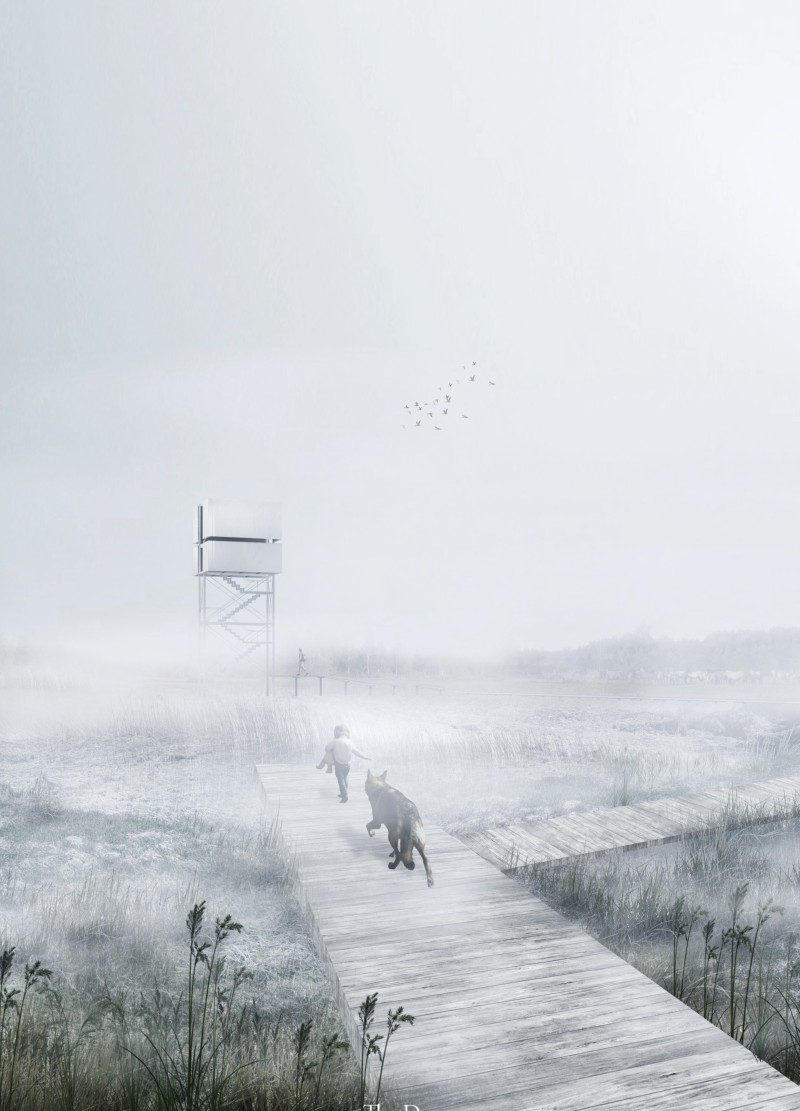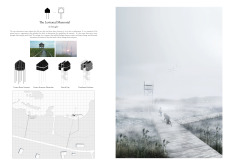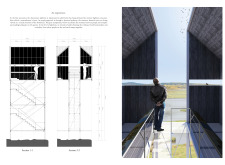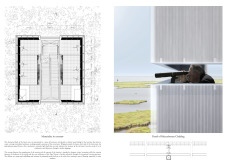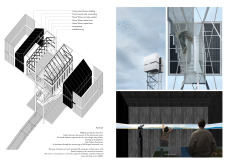5 key facts about this project
### Overview
The Levitation Memorial is strategically situated in a landscape marked by historical destruction, functioning as both a memorial and an observation tower. Its design seeks to reflect the themes of memory, renewal, and the relationship between humans and nature. By replacing a previously burned structure, the memorial stands as a symbol of loss while encouraging reflection and interaction with its surroundings through a thoughtful exploration of lightness and elevation.
### Spatial Experience and User Interaction
Entering the observation tower involves a transition from a more enclosed, dimly lit area to an expansive observation platform. This shift enhances the user experience, allowing for an array of perspectives on the surrounding landscape through vertical gaps that connect visitors with both the natural environment and the structure itself. The design guides occupants towards a central vantage point, where a connection between earth and sky is established, providing both a literal and metaphorical elevation in perspective.
### Material Selection and Construction
The Levitation Memorial employs a carefully curated selection of materials that contribute to its aesthetic and functional objectives. Polycarbonate cladding ensures the structure is flooded with natural light, creating a translucent boundary between the interior and exterior. Inside, burned cedar wood siding provides warmth and a tactile link to the history of forest fires in the area. Complementing these materials, steel tube members and timber beams ensure structural integrity while fostering a minimalist design. The use of metal grating for flooring further emphasizes the concept of lightness, allowing visitors to engage visually with the ground below, while scaffold bracing contributes to the overall safety without compromising the open, airy design.


